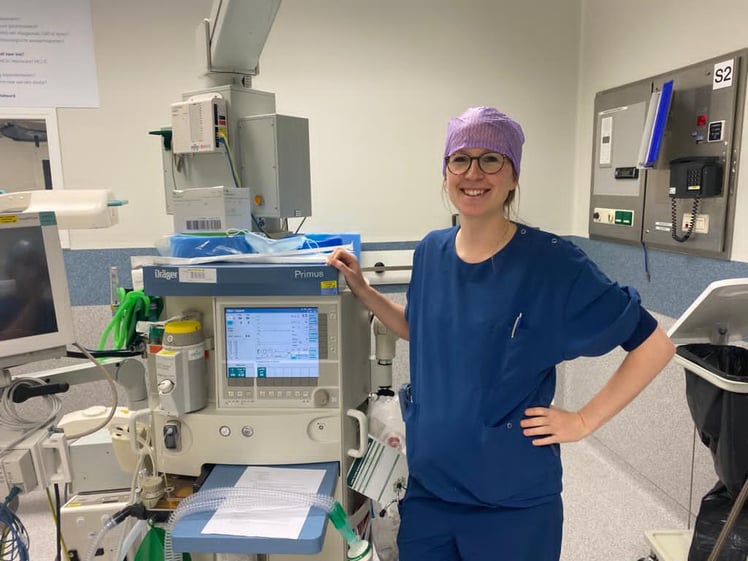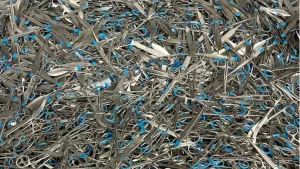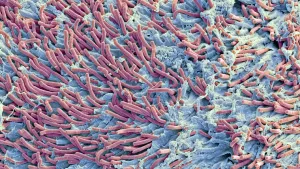Green dreams: how anesthesia influences the sustainability of your OR
Else de Ridder (Green Care Academy) · · 4 min readWhen thinking about sustainable healthcare, anesthesia is probably not the first thing that comes to mind. But together with energy use and waste creation, it’s the largest contributing factor to the CO2-footprint of the OR.
For this blogpost, I talked about the different forms of anesthesia and their sustainability with Dr. Eva van Rijnsoever, anesthesiologist at Leiden University Medical Center.
Different types of anesthesia have different CO2-footprints
Anesthesia is generally delivered in two types: as a gas which is inhaled (desflurane, isoflurane, sevoflurane), or as a liquid which is injected (propofol).

Both forms are used for different situations in today’s healthcare. It is often the choice of the anesthesiologist which type of anesthesia is used. For these different types, the influence on the environment has been calculated by several researchers. The results were unambiguous: the environmental impact of propofol is four orders of magnitude smaller than desflurane! This is because gaseous anesthetics are potent greenhouse gases. Desflurane is 2540 times more potent than CO2, isoflurane is 510 times more potent, and sevoflurane 130 times. Traces of these gases are even found on the North Pole!
As an anesthesiologist, you determine which form of anesthesia you use. If you want to switch to propofol, it is something you can start with tomorrow. You don’t need any other people to make this switch. Propofol is already available in every OR and switching from desflurane, isoflurane or sevoflurane to propofol is a choice you can make yourself.
– Dr. Eva van Rijnsoever
Using anesthetic gases in a sustainable way
Switching to propofol for 100% is probably not achievable. Some medical indications or patients still require gaseous anesthesia. Luckily there are ways to use these gases in a sustainable way. The first thing to do is use a low flow. By using less gas, the environmental impact will also be lower. Secondly, you can choose a gas with a lower environmental impact. As can be read above, desflurane has a much higher impact than isoflurane and sevoflurane. Avoid desflurane when possible.
Eva: “We organised a ‘Green Air Week’ with our Green Team to make our colleagues more aware of these impacts. During this week, we gave presentations about this subject and answered everyone's questions. We noticed that our fellow anesthesiologists were very eager to learn more about this topic. Most have been an anesthesiologist for some time and they found it very interesting to learn something new about their profession. This helps creating awareness around this topic. It also helps that this is something very concrete which can be implemented right away. This is the case for both low-flow gaseous anesthesia and switching to propofol.”
Measure your impact
The amount of the different types of anesthesia you use can be easily requested at the pharmacy or at procurement. If you organise a campaign or awareness week like Eva did, it is very motivating to see the amount of bottles you normally use decreasing.
We can see the amount of sevoflurane we use decreasing (we do not use desflurane or isoflurane). We email these results on a regular basis to all anesthesiologists. In this way, you see the direct impact of your efforts.
– Dr. Eva van Rijnsoever
How to get started
I advise you to start with an awareness campaign about this topic. Your fellow anesthesiologists will enjoy learning something new about their profession that they can implement in practice right away. And don’t forget to request the amount of anesthetic gases and propofol at your pharmacy or at procurement! You can even convert their environmental impact to car kilometers and costs: download the app ‘Anaesthetic impact calculator’ to calculate this.
On every anesthesia machine is a fact sheet with the equal amount of car kilometers you make when using an anesthetic gas. This is more tangible than a CO2-footprint. It reminds me to use low-flow and switch to propofol when possible.
– Dr. Eva van Rijnsoever
Inspired? Great! Learn how to start a project like Eva did during the Green Team workshop on October 18 2021 at Green Care Academy!
If you want to keep learning about greening your operating room, you can read 10 concrete steps to make your operating room more sustainable.
This blogpost was created in collaboration with Green Care Academy.







